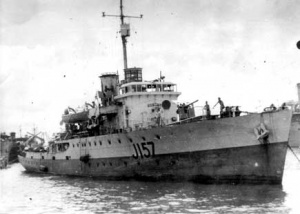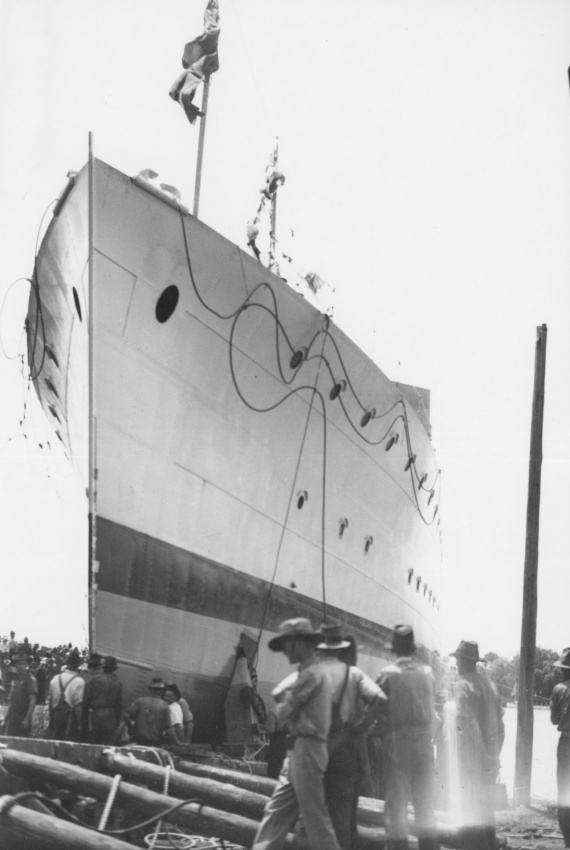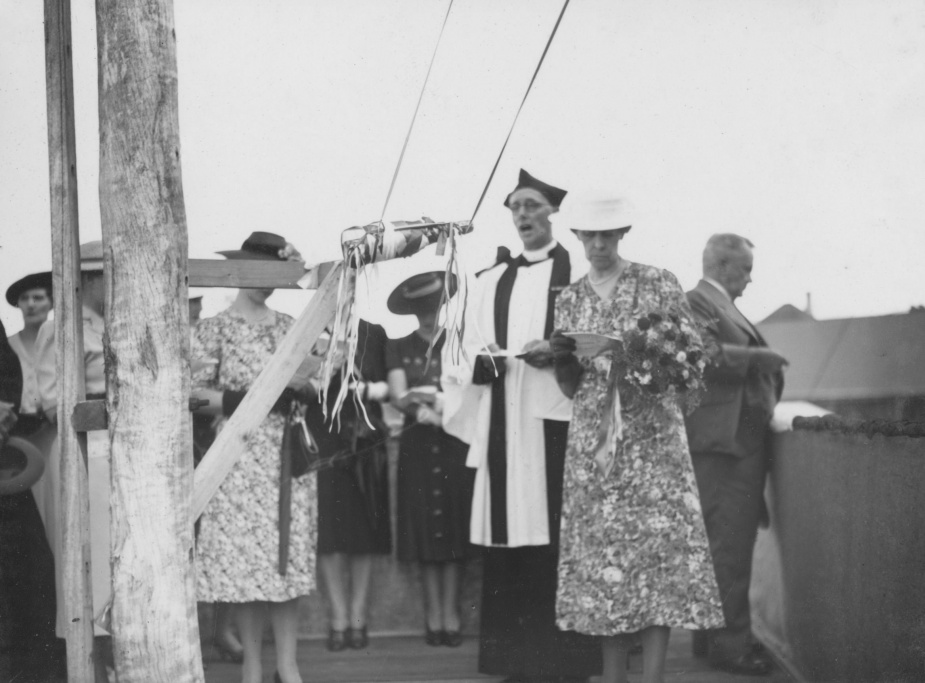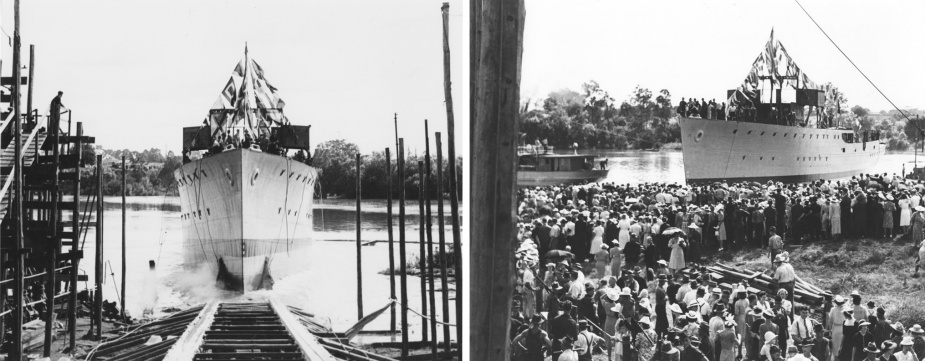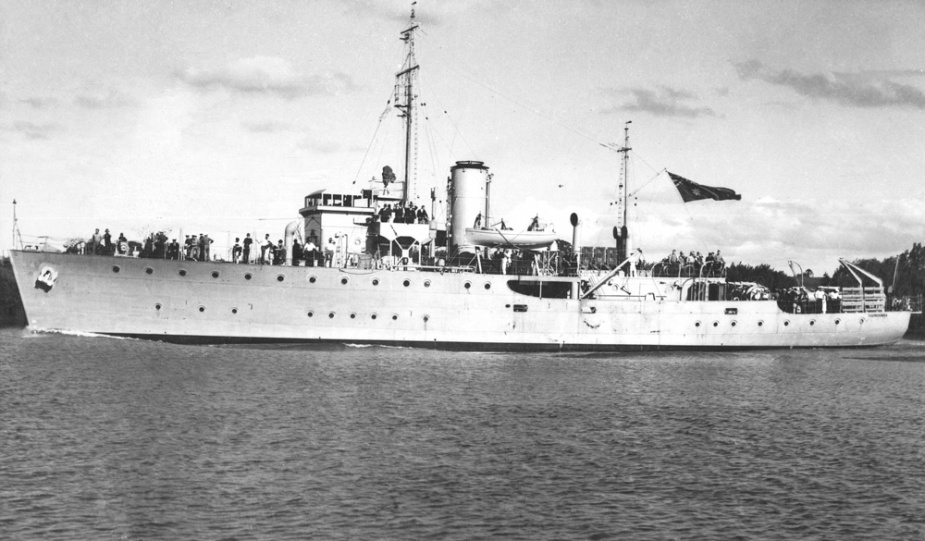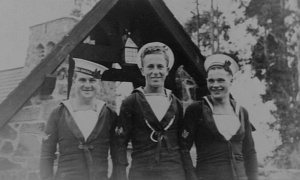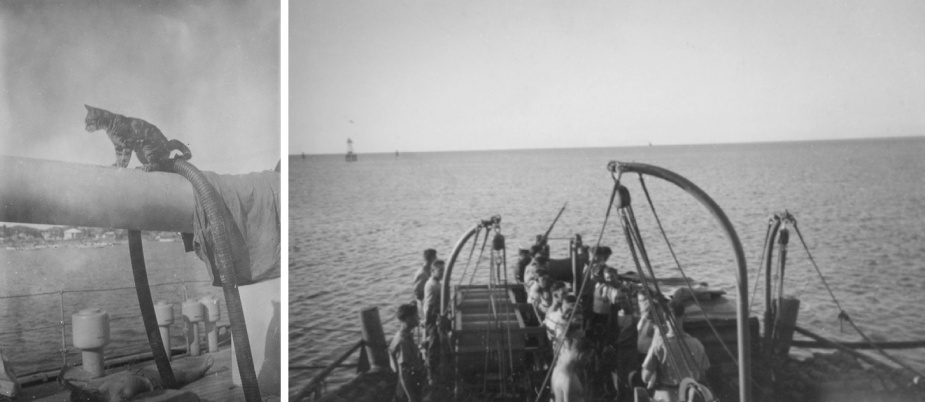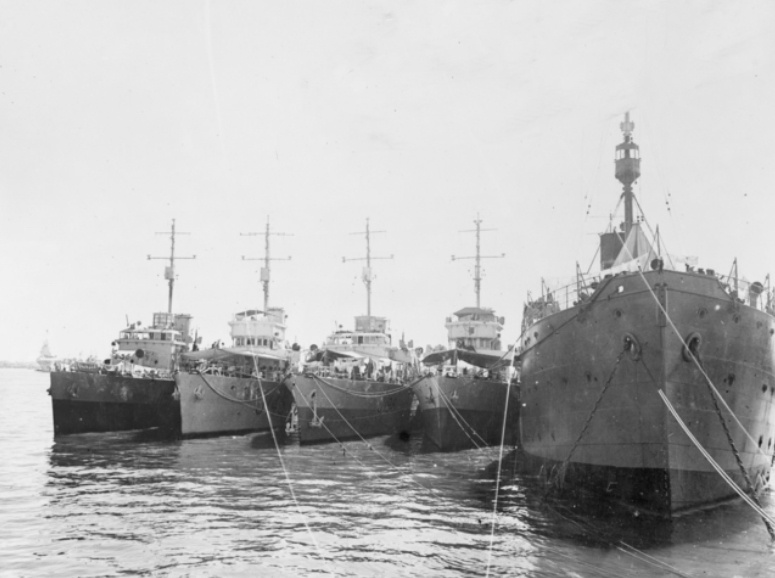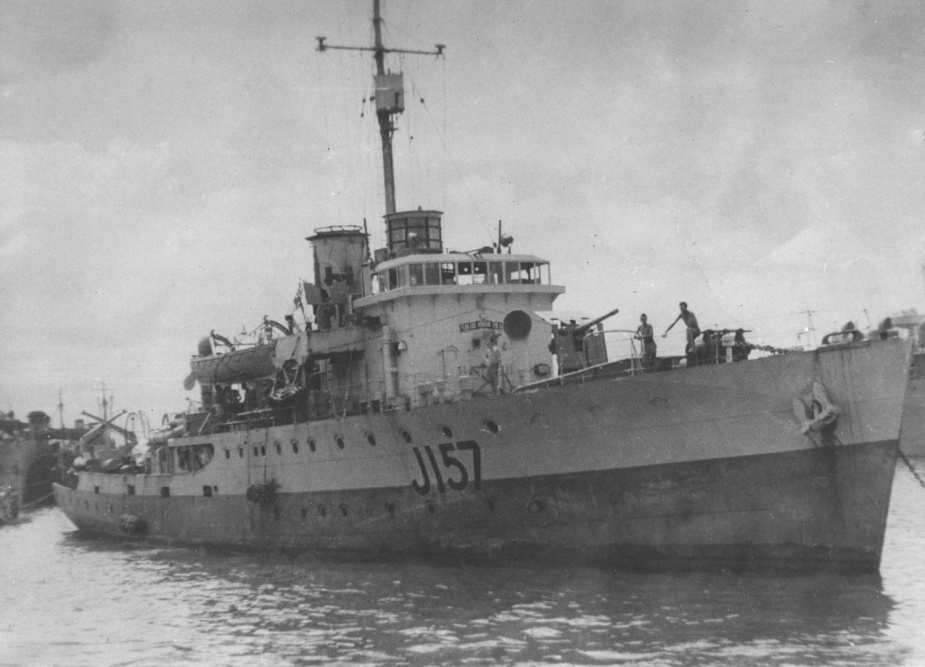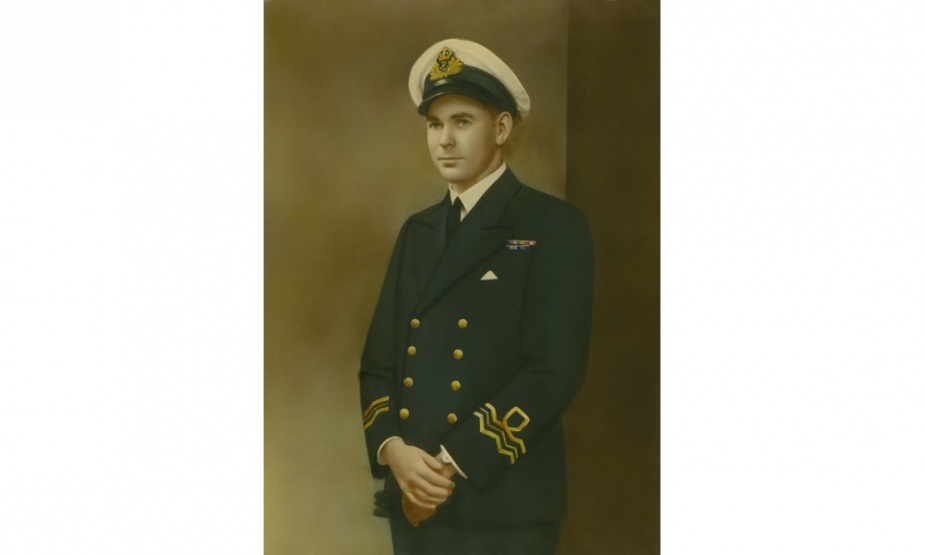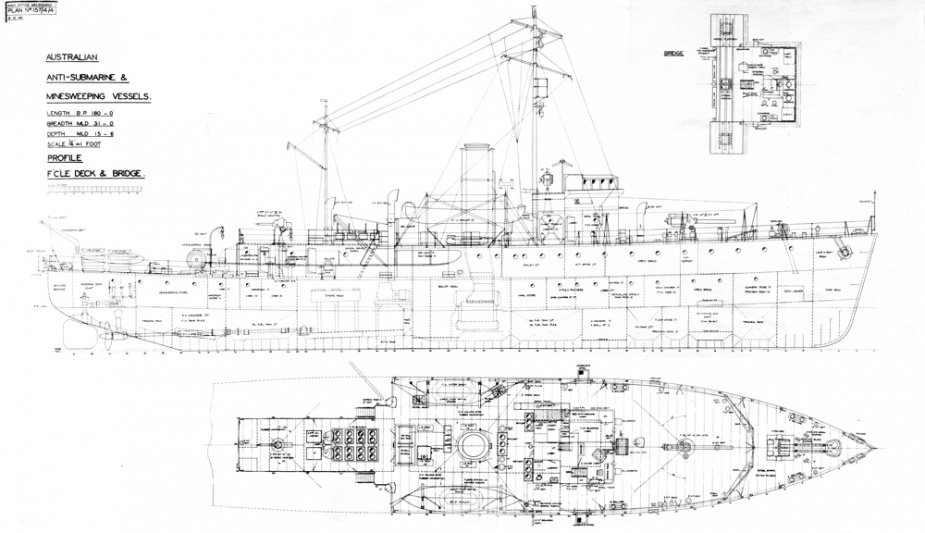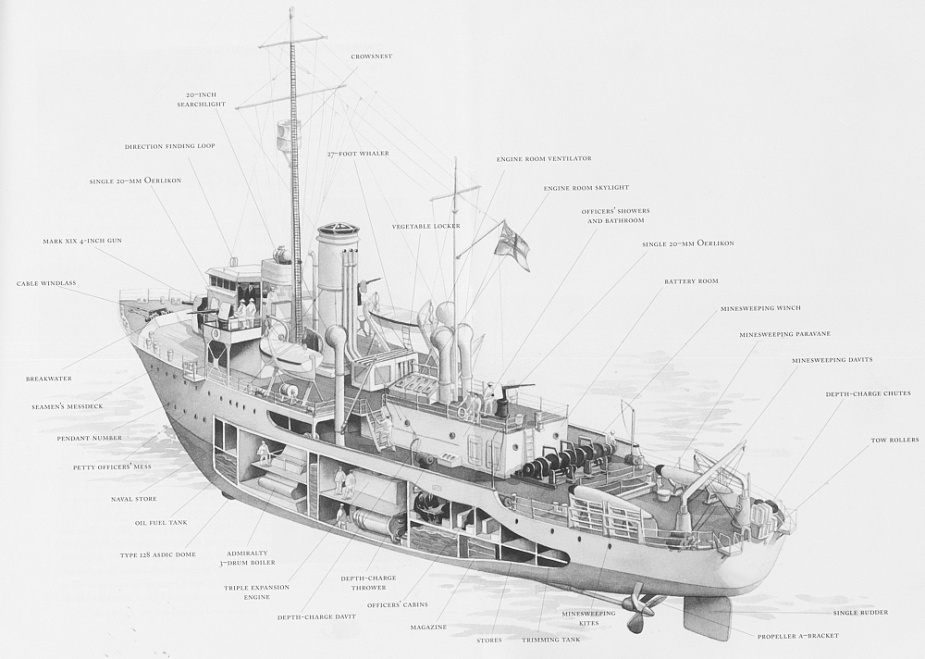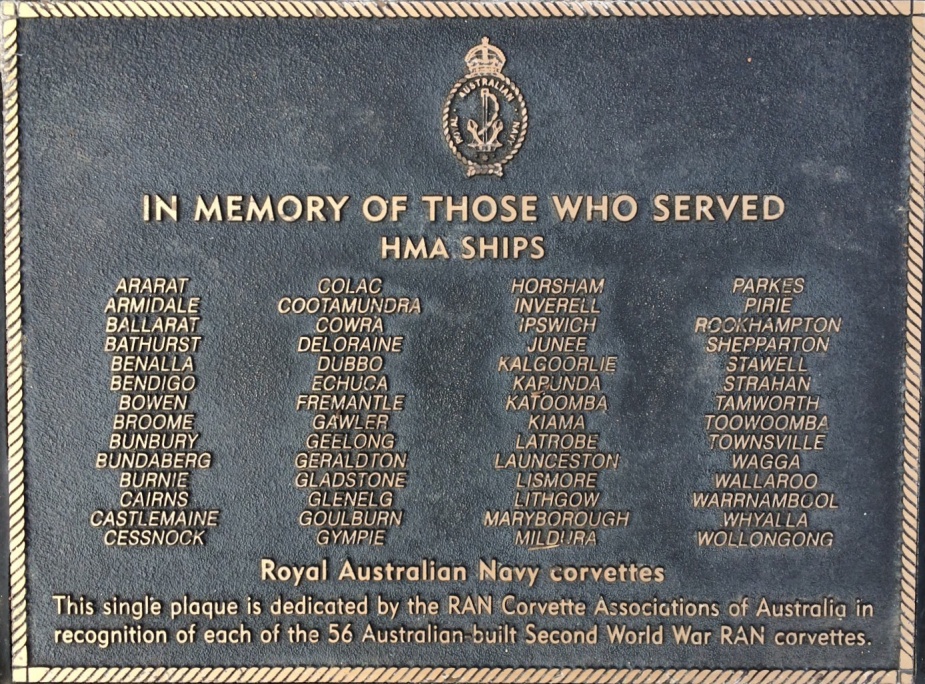HMAS Toowoomba (I)
| Class |
Bathurst Class |
|---|---|
| Type |
Australian Minesweeper |
| Pennant |
J157 |
| Builder |
Walkers Ltd, Maryborough |
| Laid Down |
9 August 1940 |
| Launched |
26 March 1941 |
| Launched by |
Mrs Lowther, wife of a Walkers Ltd employee |
| Commissioned |
9 October 1941 |
| Decommissioned |
5 July 1946 |
| Dimensions & Displacement | |
| Displacement | 650 tons |
| Length | 186 feet |
| Beam | 31 feet |
| Draught | 8 feet 6 inches |
| Performance | |
| Speed | 15 knots |
| Complement | |
| Crew | 85 |
| Propulsion | |
| Machinery | Triple expansion, 2 shafts |
| Horsepower | 1750 |
| Armament | |
| Guns |
|
| Other Armament |
|
| Awards | |
| Battle Honours | |
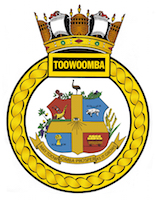
HMAS Toowoomba was one of sixty Australian Minesweepers (commonly known as corvettes) built during World War II in Australian shipyards as part of the Commonwealth Government’s wartime shipbuilding programme. Twenty (including Toowoomba) were built on Admiralty order but manned and commissioned by the Royal Australian Navy. Thirty six were built for the Royal Australian Navy and four for the Royal Indian Navy.
Toowoomba was laid down at the Walkers Yard, Maryborough, Queensland on 9 August 1940. She was launched by Mrs CW Lowther, wife of a Walkers Ltd employee on 23 March 1941.
Following acceptance trials Toowoomba commissioned at Brisbane on 9 October 1941 under the command of Lieutenant Commander Paul H Hirst, RAN (Emergency List).
The ship departed Brisbane for Sydney on 10 October, arriving on 12 October, after which she was employed on convoy escort duty on the Australian coast. In January 1942 she proceeded to Batavia in company with her sister ships HMA Ships Ballarat (I) and Wollongong (I).
During the remaining two months of the disastrous Malaya/Java campaign Toowoomba was almost constantly at sea. On passage from Singapore to Palembang early in February 1942, Toowoomba and Ballarat (I) came under heavy bombing by five Japanese aircraft, which were repulsed by gun fire after Toowoomba had sustained slight damage. In the final stages of the Malaya fighting, the ship arrived at Batavia on 14 February (the day before Singapore fell) in company with the destroyer HMS Jupiter and escorting four tankers.
Following the collapse of resistance to the Japanese forces in the Netherlands East Indies, Toowoomba, her sister ship HMAS Maryborough (I) and the Dutch merchant ship Gernraal Verspyck entered Fremantle Harbour on 10 March. Thus all the ships of the 21st Minesweeping Flotilla, of which Toowoomba was a member, had safely returned to Australia after a series of desperate rearguard actions.
From March until November the ship remained in Australian waters on escort duties in the south and south western area. On 23 November 1942 she departed Fremantle to join the British Eastern Fleet. On joining the Eastern Fleet in December, Toowoomba began a period of service which ranged widely over the Indian Ocean on convoy escort and patrol work. Her service included duty in the Persian Gulf.
The British Pacific Fleet was formed on 22 November 1944. The fleet included two flotillas of Bathurst Class minesweepers; the 21st Minesweeping Flotilla (reconstituted on 1 December 1944), of which Toowoomba was a member; and the 22nd Minesweeping Flotilla. Although built as minesweepers the ships of the Bathurst Class did comparatively little sweeping. The exigencies of war dictated that they were to be occupied mainly in convoy escort, anti-submarine patrols and various other duties, for which they were not always ideally suited.
Toowoomba returned to Fremantle on 3 December 1944 to undergo a refit following her service with the Eastern Fleet. The refit was completed in mid-March 1945 and the ship sailed for Manus Island in the Admiralty Group, via Melbourne and Townsville, on 16 March. The remainder of the war saw the ship engaged in convoy escort duties and anti-submarine patrols, operating between Australia and New Guinea.
The end of hostilities came on 15 August 1945 and on 21 September Toowoomba arrived at Hong Kong. She was soon busily engaged in minesweeping in the area and also carried out surveys of Hong Kong and Swatow Harbours.
Toowoomba returned to Australia in December 1945. On 11 December the Commanding Officer, the First Lieutenant and fifty sailors of the ship’s company paid an enjoyable visit to the city of Toowoomba in south east Queensland, after which the ship had been named.
On 4 June 1946 Toowoomba, in company with her sister ships HMA Ships Burnie (I) and Ipswich (I), departed Brisbane for Ceylon where they were to be handed over to the Royal Netherlands Navy. On 5 July 1946 at Colombo the three ships paid off and were transferred to the Royal Netherlands Navy. Toowoomba was renamed Boeroe. During her RAN commission the ship had steamed over 100,000 miles. Boeroe was removed from the effective list of the Royal Netherlands Navy in 1958.
Note: This video is hosted on YouTube. Department of Defence users will not be able to view this video on the Defence Protected Network.
This cine film has been placed online as part of the Sea Power Centre - Australia’s ongoing archival digitisation program.
Further Reading
- The Corvettes: Forgotten Ships of the Royal Australian Navy,by Iris Nesdale - published by the Author, October, 1982.
- Notable Service to the Empire: Australian Corvettes and the British Pacific Fleet 1944-45, by Hugh Campbell. Published by Naval Historical Society of Australia, Inc. 1995
- Corvettes - Little Ships for Big Men, by Frank B Walker - published by Kingfisher Press, NSW, 1996.
- The Australian Centenary History of Defence Volume III, The Royal Australian Navy, Edited by David Stevens, Oxford University Press, South Melbourne, Victoria, Australia, 2001.

